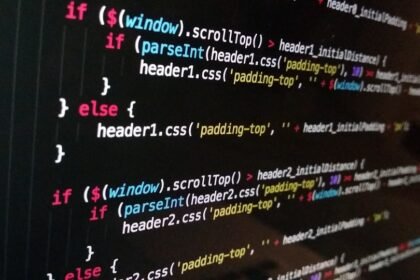The industrial sector has experienced unprecedented challenges and transformations in recent years, driven by rapid technological advancements and the necessity for resilience in a volatile global market. The digital transformation of manufacturing, characterized by the integration of cutting-edge technologies such as the Internet of Things (IoT), artificial intelligence (AI), big data analytics, and robotics, is fundamentally reshaping the landscape of the manufacturing world. As we look to the future, it is essential to explore not just the current state of digital transformation in manufacturing but also what lies ahead.
The Current Landscape: A Snapshot of Digital Transformation
Digital transformation in manufacturing is not just about automation; it encompasses a holistic approach to improving processes, product development, and customer interactions. Some key trends defining this landscape include:
-
Smart Manufacturing: The rise of smart factories, equipped with interconnected machinery and systems that communicate in real-time, allows for enhanced efficiency and productivity. These systems utilize sensors and IoT technology to collect and analyze data, leading to informed decision-making.
-
AI and Machine Learning: AI is being leveraged in various manufacturing processes, from predictive maintenance to quality control. Machine learning algorithms can analyze vast datasets to identify patterns, predict failures before they happen, and optimize production schedules.
-
Advanced Robotics: Collaborative robots, or cobots, are designed to work alongside humans, enhancing manufacturing efficiency and safety. These robots are easily programmable and can adapt to different tasks, making them a valuable asset in dynamic production environments.
-
Additive Manufacturing: 3D printing technology has revolutionized the prototyping and production processes, enabling manufacturers to produce complex parts on-demand, reduce waste, and shorten lead times.
- Blockchain: In an increasingly globalized supply chain, blockchain technology is being explored for its potential to enhance traceability and transparency, particularly in industries like pharmaceuticals and food production.
The Challenges Ahead
While the benefits of digital transformation are substantial, manufacturers must navigate several key challenges as they progress:
-
Skill Gaps: There is a significant mismatch between the skills required for modern manufacturing roles and the skills possessed by the current workforce. Investing in training and development will be crucial to prepare employees for digital tools and technologies.
-
Data Security and Privacy: With increased connectivity comes the risk of cyber threats. Manufacturers must prioritize cybersecurity measures to protect sensitive data and maintain consumer trust.
-
Integration Issues: Legacy systems often hinder the seamless integration of new technologies. Developing a cohesive digital strategy that aligns with existing operations requires careful planning and execution.
- Financial Investment: The initial costs associated with digital transformation can be daunting, particularly for small and medium-sized enterprises (SMEs). Manufacturers must balance the need for innovation with financial sustainability.
What’s Next for Manufacturing?
As we move further into the digital age, the future of manufacturing will be characterized by the following trends:
-
Resilient Supply Chains: The pandemic highlighted vulnerabilities in global supply chains. Future-oriented manufacturers will leverage digital technologies to create more resilient, flexible supply chains that can adapt to disruptions.
-
Sustainable Practices: Emphasizing sustainability will become increasingly important. Manufacturers will utilize digital solutions to optimize resource use, reduce waste, and lower carbon footprints, adhering to both regulatory pressures and consumer preferences.
-
Personalization and Customization: Advances in technology will enable mass customization, allowing manufacturers to meet diverse customer demands while still enjoying the efficiencies of mass production.
-
Human-Machine Collaboration: The future of manufacturing will not see humans replaced by machines, but rather, enhanced collaboration between humans and machines. As AI and robotics continue to evolve, they will complement human capabilities, leading to greater efficiency and innovation.
- Continuous Learning and Adaptation: The rapid pace of technological change necessitates a culture of continuous learning within manufacturing organizations. Companies must foster environments where innovation, experimentation, and adaptation are encouraged.
Conclusion
The digital transformation of manufacturing offers a world of possibilities for enhancing productivity, operational efficiency, and sustainability. As the industrial sector embraces these changes, stakeholders must prioritize the cultivation of a skilled workforce, the implementation of robust cybersecurity measures, and the development of adaptable, resilient business models. By doing so, manufacturers can not only navigate the complexities of digital transformation but also position themselves for success in an ever-evolving global marketplace. As the future unfolds, the question remains—not just how manufacturers will adapt, but how boldly they will innovate amidst the opportunities at their doorstep.




